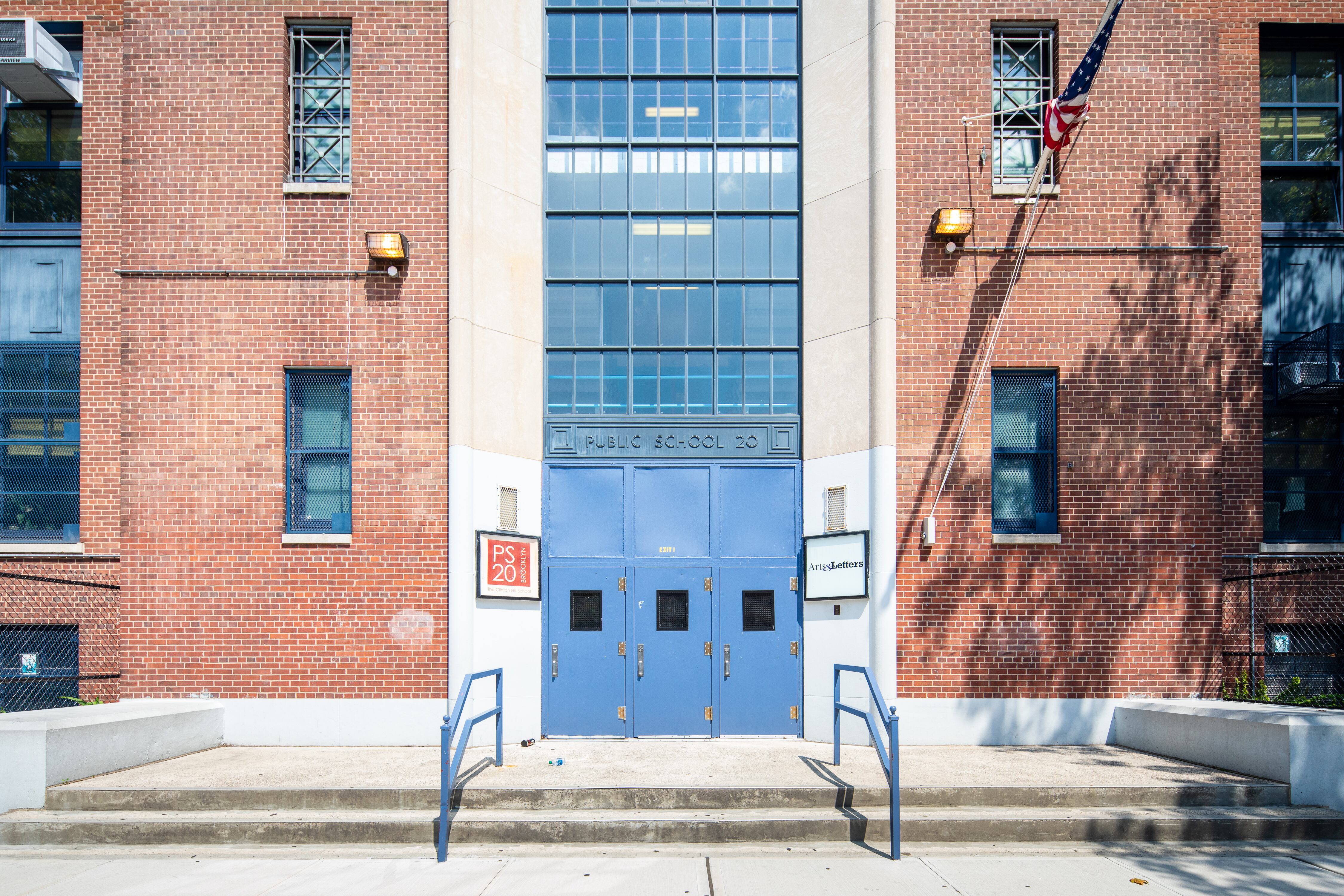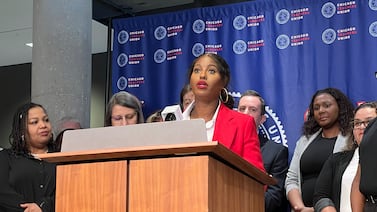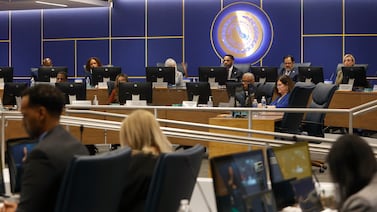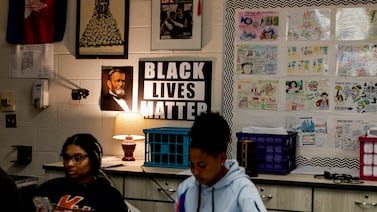This article is co-published with The New York Times Sunday Review.
Of all the American institutions the pandemic has shut down, none face pressure to reopen quite like schools do. Pediatricians exhort schools to open their doors wherever possible or risk developmental harm to kids. Working parents, particularly mothers, are in crisis, worried about having to leave the work force altogether in the absence of a place to send their young children each day. And President Trump is campaigning for schools to reopen, threatening to withhold funding if they don’t.
The pressure has mounted as school districts have made it clear that they can do no such thing. Across the country — including in Phoenix, Houston, and a huge chunk of California, where coronavirus cases are rapidly rising — schools are preparing their students and staffs for a continuation of the “remote learning” that began in the spring. In New York City and Chicago, where the virus is more under control, schools are moving toward a hybrid option with remote learning some days, in-person school others. Even in places like Detroit and Memphis, where districts plan to offer in-person school for those who want it, local leaders could change course if virus cases rise; they also have yet to figure out what to do if too many worried teachers or students opt out.
Outrage over schools’ inability to fully reopen should not, of course, be directed at schools themselves, but at the public health failure that makes it impossible for most of them to do so. The consequences of closed or half-open schools, meanwhile, are far vaster than the brutal economic challenge facing working parents and their employers. That’s because schools do much more than provide child care. They provide education, fundamentally. But as the pandemic has made clear, they also provide meals, social connection and health services.
Meeting any one of these needs in normal times through a single institution is a struggle. Add in an out-of-control pandemic that multiplied the number of children who are not getting enough to eat to 14 million, made in-person teaching a health gamble and threw off the learning trajectory of every child in America — all while creating huge projected budget shortfalls for schools — and you have a “train wreck,” said David K. Cohen, a visiting professor of education at Harvard.
Compounding the difficulty is the fact that schools are run locally, autonomy the Trump administration has taken to new extremes by offering reopening instructions that amount to, “good luck.” As a result, many of the country’s 13,000-plus school districts have been left alone to navigate everything from finding masks to deciding what safe classrooms look like — not to mention how to offer widespread and safe food distribution and personalized emotional support in the absence of physical gathering space.
“If you wanted to invent a really weak organization to do all of those things, it would be schools,” Cohen said. “But the reality is, schools are what families have. Especially poor families and Black and brown families.”
So if the first sin was failing to control the pandemic, the second was letting the virus run wild in a country ill suited to handle the cascading consequences. The people left to figure it out are superintendents, school board members, teachers and parents, for whom that simple word “reopen” actually entails a dizzying array of interlocking problems. The people who will pay the eventual price are America’s children, for years to come.
Let’s start with child care, which translates, at the barest minimum, to providing every child with a safe place to go so their parents can work and so that they can learn. For schools to play that role, they require two basic ingredients: sufficient physical space and willing and capable adult caregivers. But how much space and how many adults?
That calculation starts with public health considerations. Exactly what part open schools play in spreading the virus is still unknown, but new research suggests that kids age 10 to 19 can transmit it at rates similar to adults. And with case numbers still rising in the United States, school reopenings in places like Denmark that have contained the virus aren’t fitting guides to what would lie ahead here if districts heeded Trump’s call to bring students back.
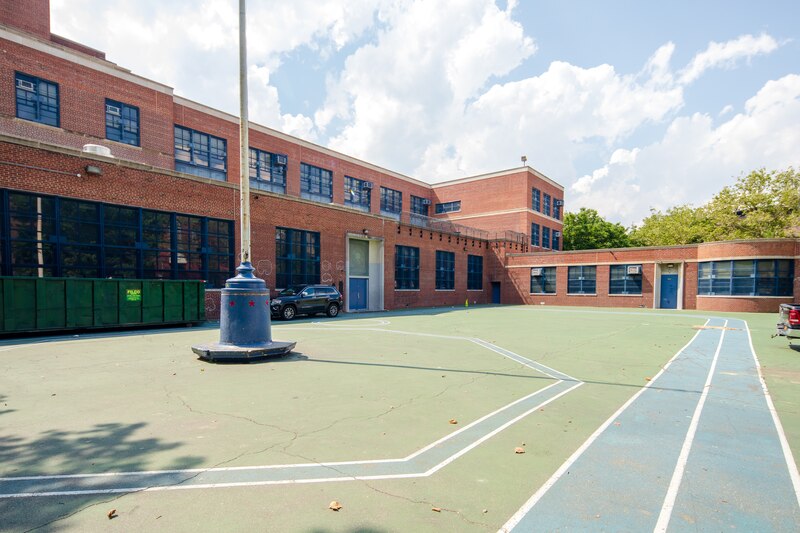
One way to mitigate concern is to enforce physical distancing rules, along with mandates for masks and strict hygiene. The Centers for Disease Control and Prevention has suggested schools keep students 6 feet apart where feasible, a caveat at the root of school leaders’ confusion. The American Academy of Pediatrics has suggested just 3 feet may be OK, especially with masks, citing the challenge of distancing in schools and the downsides of remote learning.
Skyrocketing cases in some parts of the country have rendered this conversation moot, with school districts and health departments deciding they cannot take the risk of opening school doors at all. But even if other districts decide they can open, superintendents have to take into account two other variables in addition to space: parents’ willingness to send their children to in-person school and teachers’ willingness to show up and teach them.
These considerations can be in direct tension. The more children who want to go to school, the more teachers needed to teach them. And both families and teachers are more likely to want to go if schools take more precautions, like promising 6 feet of separation. But the more precautions schools take, the fewer students they can welcome into each building. Even more complicated, preferences are likely to change multiple times throughout the year, as families and educators reassess the spread of the virus in their community and their personal risk tolerance.
Jason Kamras, the schools chief in Richmond, Va., recently likened the entire conundrum to “playing a game of 3-D chess while standing on one leg in the middle of a hurricane.”
“I have families emailing me that they are desperate for their kids to be back in school,” he said. “And also some families who, if their kids are not in school, they are going to lose their jobs and lose their homes. Then I have families emailing me, understandably, saying they have somebody at home who has a compromised immune system and they’re terrified to send their kids.” (Richmond schools are now set to start the school year online.)
Nationally, despite the looming child care challenge, a vast majority of parents remain skeptical of a return to in-person school. In a recent survey, nearly three-quarters of parents called going back into school buildings a “large to moderate” risk for their children, and the numbers were even higher for Black parents and Hispanic parents.
Teachers are also wary. They know more than most how much students and their families need school. “I 100% want to be with my kids,” said Kathleen McGinness-Grimes, a ninth-grade algebra teacher at a Bronx high school. “I know that they do better in person.”
But teachers did not sign up to prop up the economy by providing child care while putting their health and the health of their families at risk. And romantic portrayals of teaching as a calling obscure the reality that, vocation or not, teachers are also workers who have received few assurances about job safety. School districts are still working out who will be able to work from home, what protective equipment they can provide, how students will be grouped and how infections will be handled.
“Honestly, we’ve had times where there’s no soap in bathrooms. We’ve had no hot water in the building,” McGinness-Grimes said. “I don’t feel safe.”
In Detroit, the schools superintendent, Nikolai Vitti, wants to offer in-person schooling five days a week to those who want it, with an online option for those who don’t. He says he thinks that only half of families will choose physical school, allowing for plenty of social distancing. But he worries teachers’ concerns could make that impossible — for reasons he understands, even if they frustrate him.
Imagining the thought process of a teacher, he said, “If we’re in a non-Covid environment and I have to buy pencils for my children, and my school doesn’t have enough guidance counselors and social workers, and class sizes are large, then how in the world can I trust school systems to get this right in a Covid environment?”
One possible compromise: Some districts are considering providing full-time or nearly full-time in-person school to elementary school students, for whom at-home supervision is most taxing and, according to early evidence, virus transmission is least likely.
The uncertainty around space and safety has driven some districts to a hybrid schedule, where students spend some days in school and other days learning at home, allowing for far fewer students per classroom. One of the many permutations New York City schools can choose from would have students going to their schools just five days in a three-week stretch: Tuesday and Thursday one week, Monday and Thursday the second week, and just Thursday the third week.
The hybrid approach comes up short for many parents. Debra Morello, who lives in the Bronx, works for a meat distributor and has sent her 5-year-old daughter to one of New York City’s centers for children of essential workers for the last several months. If those centers go away, and her daughter is welcome in school buildings only occasionally, “Where am I going to find money for extra child care?” she wondered.
New York City’s schools chancellor says the city is working on some limited child-care options, and figuring out whether empty offices and vacant buildings can be used as school space. But there are no real answers yet.
The reality is that solutions like converting community or outdoor space into additional classrooms, or increasing the number of available adults through a new national child care or tutoring corps, would require a degree of shared responsibility, coordination and resources that schools have never been able to count on — and that hasn’t changed with the pandemic’s arrival.
The clock is ticking: Even as schools delay their start dates, students and teachers across much of the country are due back in August.
In addition to child care, there is food — another resource schools provide that is both much more necessary and much harder to deliver because of the pandemic. In normal times, U.S. public schools provide 30 million free or nearly-free meals a day.
Last spring, when schools closed, states and schools devised emergency workarounds to ensure that students and their families could still have access to food. Many set up grab-and-go distribution sites. Some handed out a week’s worth of food at a time. We do not know exactly how many families schools managed to reach.
In Colorado, where Chalkbeat analyzed available data, the pattern was clear: While demand was high in some districts, over all, schools gave out only a small fraction of what they normally would have. Denver’s public schools served 12% of the meals they usually provide, for example.
One of the biggest impediments to picking up available meals — the inconvenience of driving or using public transit to go to a pickup site during a limited window, risking exposure to the virus along the way — is not going away in the fall if schools are closed.
Eventually, the federal government set up a program to send money for food directly to families to make up for lost meals, though months later, some families are still waiting for those benefits to arrive. That program came out of one of several pieces of coronavirus relief legislation passed since March, which have included financial help that researchers estimate have kept poverty rates from rising sharply.
But the financial stress on families is continuing to mount. In June, a survey by the Census Bureau asked American adults whether children in their household “were not eating enough because we couldn’t afford enough food.” The results indicate that about 14 million children are hungry because of financial strain — more than five times the number in 2018. That’s also about two and half times the number in 2008, the peak of food insecurity during the Great Recession, according to Lauren Bauer, an economics fellow at the Brookings Institution who analyzed the newest data.
As with the virus itself, Black and Hispanic families bear the heaviest burden. Among Black households, one in three families with children reported some food insecurity for children. That was true of about one in four Hispanic families with children and one in five families with children nationwide.
“The numbers we’re observing in June are higher than we’ve ever observed,” Bauer said.
The program replacing school meals with benefits doesn’t extend into the new school year. And rule changes that made food distribution doable this spring — allowing schools to give meals to any students, rather than having to check their eligibility — are also set to expire. Another relief package could address both. But no matter what happens, schools will be working to fill in the gaps as a major source of meals for low-income children.
Beyond providing food, schools also serve as de facto community social workers, sometimes with an actual social worker or two on staff, and sometimes not. That was true before the pandemic, when teachers and administrators could count on speaking face-to-face with children and their parents on a regular basis.
“At this moment, given the pandemic, we need to create safe ways” to continue doing that when “we can’t ensure schools will be safe for kids and teachers and families,” said John King, a former education secretary who now runs the Education Trust, a nonprofit focused on education and civil rights.
Again, the experience of the spring gives a hint at families’ challenges and the lengths schools will go to help them. In an agricultural community about 50 miles from Fresno, Calif., the Sundale Union Elementary School district’s social worker spent much of the spring assisting families applying for federal food benefits. The district posted local job openings on its Facebook page for parents. The community center that operates out of the district’s single school opened a food and clothing pantry to families twice a week.
“We did a lot more of that than we normally do,” Superintendent Terri Rufert said. “And it wasn’t just the parents normally in our socioeconomically disadvantaged group.”
Whether or not they open their buildings, schools will also be tasked with helping students adjust after months of upended schedules, limited social interaction, and families trying to keep it together during a period of heightened stress.
“Our children are falling behind, even more than they already were. What are you going to do about it?”
Our failure to get schools fully open means that meeting students’ mental health needs is even harder. And organizing hybrid schedules or remote learning may sap energy that schools need to serve students’ continuing needs. “I think we’re still going to be in survival mode as we move into this next academic year,” said Lisa Sontag-Padilla, a behavioral scientist with the RAND Corporation who has studied school mental health services.
Black and Latino children will deserve particular attention, as their family members are disproportionately likely to have gotten infected with the virus and had to deal with its medical, emotional and financial effects. Black students, families and educators have simultaneously been at the center of a national movement protesting the violent deaths of Black Americans by police officers.
“These kids have suffered a lot over the last few months,” Zelatrice Fowler, who teaches gifted students in Phoenix and is the president of the Arizona Alliance of Black School Educators, said.
She’s not sure schools will be up to the task of helping students move forward. Already, “There was a disconnect between teachers and students, especially when the majority of teachers were white,” she said. “Now, there’s a bigger need to really, truly understand the students and their families.” (Nationally, about 79% of public-school teachers are white, whereas about half of public-school students are white.)
The support Fowler will be able to offer this fall will be through a computer screen. With case numbers rising in Phoenix, schools there are all starting online.
If taking on the child care, food and the mental health challenges facing American children this fall were not enough, there is also, of course, the matter of making sure those children learn.
Providing any form of education this fall means reckoning with an extraordinary version of what educators call “summer slide.” In normal times, teachers sometimes lack precise information about each child’s academic starting point, and basics like who and what teachers will teach can remain a mystery until late summer.
Heading into this school year, these constraints are profound. After school buildings closed this spring, teachers offered various forms of substitute education, from paper packets to video classroom gatherings. Nevertheless, a small but significant share of students went totally unaccounted for as they struggled to connect to online lessons without reliable internet, took on child care responsibilities for younger siblings, or just tuned out without the familiar support of teachers and counselors. Over all, the best estimates from teachers are that six in 10 students were regularly engaged in their coursework.
“Children were not properly served academically and social-emotionally when schools were shut down in the spring,” Vitti, the Detroit superintendent, acknowledged. His push for in-person summer school and an in-person option for students this fall, he said, was spurred by parents saying: “Our children are falling behind, even more than they already were. What are you going to do about it?”
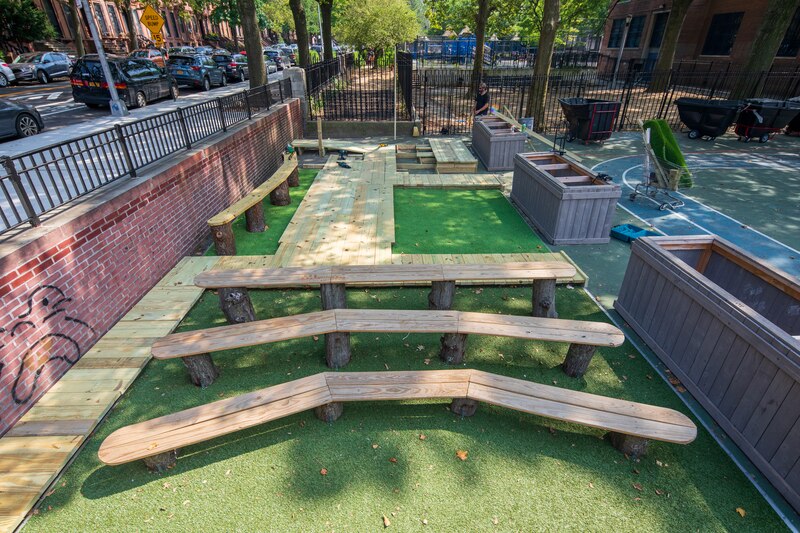
Remote learning was an especially poor substitute for the needs of America’s seven million students with disabilities. Anna Fridman’s 5-year-old twins missed out on seven weekly sessions each of speech, occupational and physical therapy when their Brooklyn pre-K center closed. “As a parent, it’s very, very painful to see,” she said.
In Chicago, 16-year-old Sarah Alli-Brown had planned to spend her entire junior year preparing for the SAT with daily help from an English teacher. Instead, the older sister of 9-year-old twins, she found herself charged with caring for her brothers while her mother worked, and she went weeks without real instruction from her school.
Many of the impediments that made remote learning a mostly nonlearning experience this spring are still present today. The most significant is many students’ lack of internet access at home. In Newark, where cost is the main barrier, one in three households don’t have internet at home; in some rural parts of the country, broadband options don’t exist at all.
An ever-optimistic group, some educators see potential in their hybrid or fully remote future, imagining more personalized lessons and deeper connections with smaller groups of students. And districts are working on ways to make the fall better than the spring, adding more time during the day to interact with teachers live over video and bringing back more of the usual structures, like letter grades, to keep kids on track.
But that’s little solace to parents of kids who will be trying to learn to read on Zoom.
Even if teachers and students can return to classrooms, the fundamentals that can make school come alive will be challenged by even the most basic health requirements. “I like students to be able to talk about their writing with each other,” Kristin Roberts, a high school English teacher in Phoenix, said, “to ask someone how this sentence sounds, to pass papers back and forth, to sit next to each other and have conversations about what makes writing good or what they’re noticing in literature.” How will any of that happen in a mask from 6 feet apart?
Schools are mustering real creativity to meet the moment. Arne Duncan, education secretary for most of President Barack Obama’s tenure and now a managing partner with the Emerson Collective, said he’s spoken to school districts that know they won’t be able to open in person and so are planning to run weekly bus routes to bring their most vulnerable students to school for check-ins. Other schools are figuring out that if some students are in the building only on Mondays, Tuesdays, and Thursdays, for example, the school will send them home Thursday with enough food for the weekend. Others are converting cafeterias into academic space and creating afternoon and Saturday shifts for their schools.
These workarounds are also dark, revealing how far we remain from being able to offer a halfway normal school year for the students who need it most.
The most important way to help is undoubtedly to do what could have made our American pandemic what it is for children and families in Finland, Denmark, and even Italy. We have to control the virus. Because whether it should work this way or not, without schools we have a hobbled economy, hungry children, and exhausted parents.
Making schools functional will also take money, as states are facing projected shortfalls totaling more than $500 billion over the next three years thanks to the spiraling pandemic. Without federal help, schools will have to lay off teachers and make other painful cuts in the years ahead. What school leaders, social scientists, parents, and others say is needed in the short term — the ability to add space and staff members, offer in-school tutoring, and provide additional child-care options, among other things — won’t be possible without more funding, either.
Congress has yet to answer calls for additional relief. If it comes, and if every state enacts real public health measures, schools will have a shot at turning a catastrophe into a mere crisis. Unless both happen, schools are likely to spend years trying to meet students’ growing needs with less. They will try their best. It will not be remotely enough.

